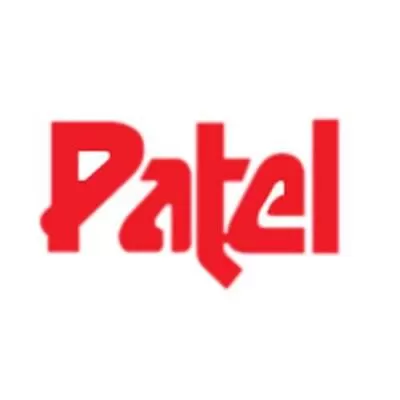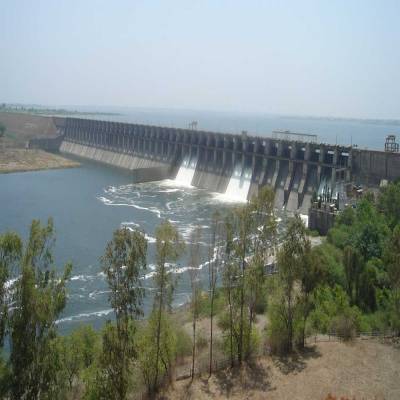- Home
- Technology
- Irrigation Marvel
Irrigation Marvel
Read full article
CW Gold Benefits
- Weekly Industry Updates
- Industry Feature Stories
- Premium Newsletter Access
- Building Material Prices (weekly) + trends/analysis
- Best Stories from our sister publications - Indian Cement Review, Equipment India, Infrastructure Today
- Sector focused Research Reports
- Sector Wise Updates (infrastructure, cement, equipment & construction) + trend analysis
- Exclusive text & video interviews
- Digital Delivery
- Financial Data for publically listed companies + Analysis
- Preconceptual Projects in the pipeline PAN India
The largest barrage in the Kaleshwaram Lift Irrigation project, the 1.6-km-wide iconic Medigadda Barrage has been constructed by L&T in a record 24 months.River Godavari is Peninsular India’s largest and a lifeline for crores of people in Telangana. However, much of the river’s torrential flow goes untapped, hence unutilised to its fullest potential – until now!In 2008, the Telangana Government conceived the Kaleshwaram Lift Irrigation Scheme (KLIS), one of the world’s largest irrigation projects, now operational, that aims to irrigate 18.25 lakh acre in 13 districts and stabilise another 18.75 lakh acre in seven more districts of Telangana. The plan is to harness water at the confluence of three rivers by the barrage at Medigadda, which will pump the water back into the Godavari through a maze of reservoirs, tunnels, pipelines and canals. Almost 2,000 million cu ft (tmc) of water per day will be moved upriver through gravity canals from the Medigadda barrage to the Annaram barrage, from where further back to the Sundilla barrage, then diverted to the Yellampalli reservoir to be distributed to the neighbouring districts. In a series of articles, CW showcases the construction perspective and successful execution of the project. In this article, we feature the first, and largest barrage of KLIS, the Medigadda Barrage, constructed by construction major Larsen & Toubro (L&T).The highlightsSays SV Desai, Senior Vice President & Head-Heavy Civil Infrastructure IC, L&T Construction, “Apart from the pride of associating with such an iconic project, L&T is equally proud to have completed this colossal project – which was inaugurated on June 21, 2019, by Telangana Chief Minister K Chandrashekar Rao – in a record timeline of just 24 months.”During its execution, L&T set several records in terms of the amount of materials used such as concrete and steel, in an extremely challenging operating environment. Some highlights:16,722 cu m concrete poured in 24 hours.25,584 concrete poured in 72 hours.1.94 lakh cu m concrete poured in a month.9,200 mt of rebar in a single month.10 m height formwork, first-of-its-kind in India, for the piers.25,000 mt of steel gates fabricated in 12 months.85 gates erected in four months.Structural features The barrage is 1,625 m in length with 84 giant piers, each 110 m long, 4 m or 6 m wide and 25 m high. Two abutments situated on either bank of the river accommodate an open fish ladder to maintain uninterrupted movement of fish during the lean season. “The raft downstream has energy-dissipating haunches to give a hydraulic jump to the water before flowing over 100 m of stone pitching,” says Desai.“ Both banks are protected with retaining walls beyond which are guide/flood bunds (11.71 km on the left bank and 6.32 km on the right bank) to protect the adjoining cultivable lands.” The barrage bridges the states of Telangana and Maharashtra by a road with a 7.5-m-wide carriageway constructed above the structure that reduces the distance by 60 km, saving millions of traffic hours and fuel cost.Materials: High on qualityThe 110-m-wide and 3.7-m-thick raft was of M2540MSA grade RCC, concreted in three successive lifts with pour heights of 1.5 m, 1.5 m and 0.7 m respectively.Each pier is 110 m long and 4 m wide with RCC of M2520MSA grade.All batching plants were integrated with ice or chiller plants to control adiabatic temperature rise or heat produced owing to hydration of cement in mass concrete. The concrete was produced at a reduced temperature of 20°C by adding ice flakes and chilled water without affecting the water-cement ratio as per mix design. The temperature and slump of concrete were continuously monitored until placement.Desai shares the major daily average material consumption during peak time: Cement: 1,700 mt (34,000 bags): 50 bulkers.1.1 lakh mt steel rebar was a huge task, properly streamlined to ensure uninterrupted supplies.Aggregates: 5,500 mt: 150 truck loads.Reinforcement: 250 mt: 10 trailers.L&T system formwork: Was used for its low heat conductivity that prevented loss of heat that reduced stripping and cycle time and for its smooth finish and elegant appearance as well.Sheet pile for seepage arrest in cofferdam: Sheet piles of 10 m depth were driven along the periphery of the cofferdam to reduce the seepage from the flowing river during monsoon and non-monsoon periods. The project consumed 2,500 mt of sheet pile to minimise the seepage.Technology equippedEquipment used for construction included wheel-loaders, ice and chilling plants, hydraulic, pick-and-carry and tower cranes, bull-dozers, excavators, dumpers, and automated pull-through welding and automated CNC cutting machines.Construction of the raft foundation required ground improvement. Desai elaborates, “The geotechnical investigation revealed certain weak areas in the ground strata that required strengthening. While methods like vibro compaction, dynamic compaction or rapid impact compaction are available, they are also time-consuming and costly. After a thorough analysis, we adopted the cement stabilisation dry-and-wet method.”Record time When asked what factors helped in the completion of the project in a record 24 months, Desai responds: “Process improvements!” and elaborates:Multiple projects within a project: The project was split into two mini projects – one on the either bank, each with its own setup of men, material and equipment. Reduction of cycle time for pier execution: A conventional 2.4-m height of concrete pouring method would have required 11 times more concrete to execute a single pier. Hence, an optimised formwork height of 5 m was adopted to increase speed of execution. Later, the formwork height was raised to 7.5 m, to eliminate one major lift and further speedup execution. The formwork height raised yet again to 10 m to achieve 4,045 cu m of concrete pour. Automated fabrication: All sequential activities of cutting, bending, rolling, welding and painting to fabricate the HM radial gates involving 26,000 mt of structural steel were fully automated. Digital intervention: ‘Concrete management technology’ monitored the entire concreting process in real time, right from production and transportation to placement of concrete. Several machines were IoT-tagged and project progress digitally monitored to improve productivity, reduce execution time and enhance overall operational efficiency. ‘Live’ feeds from RF (radio frequency) and GPS systems from the batching plants, transit mixers and boom placers provided accurate, real-time data to monitor project progress on an hourly basis and tracked on a central dashboard.Overcoming challengesMV Ramakrishna Raju, Project Director, L&T, shares the major challenges involved in constructing this barrage and measures taken to overcome them:18.5 lakh cu m concreting in a stringent timeline of 18 months: This project required 1,850,000 cu m of concrete in just 18 months, translating into an asking rate of 5,000 cu m per day during peak months. Eight batching plants and 100+ transit mixers making approximately 1,000 trips a day fed 13 boom placers in different locations spread across 3 sq km to build 13-15 different structures across the site. Meeting a massive requirement of aggregates, 20 lakh mt in 18 months: With an average daily requirement of 5,500 mt of aggregates, of different sizes varying from 10 mm to 40 mm according to the pour plan and grade of concrete, procurement, transportation and just-in-time delivery were critical considerations to meet targets. To meet the threat of rising water levels of the Godavari during the monsoons: Coffer dams, specially designed by experts, were constructed, reinforced with sheet piles to withstand a staggering discharge of 9 lakh cu m per second. Mobilising a huge workforce: The manpower requirement of 5,500 was across various categories like fitters, carpenters, welders, gas-cutters, drivers, plumbers, operators, fabricators, supervisors, foremen, etc. Mobilising and retaining such large numbers of skilled workmen, required a high level of functionality and strong administration. They were provided excellent accommodation, canteen and drinking water facilities with RO plant, refreshed with chilled buttermilk and oral dehydration salts during the summer when temperatures reached 45oC. The waste management for the entire workforce was routed through waste treatment plants of various capacities. Consider this: This landmark project achieved 13.9 million safe man-hours. Another reason to label this endeavour a true marvel!Project DetailsLocation: Medigadda, TelanganaClient: Irrigation & CAD Department, Government of Telangana. Website: www.telangana.gov.inProject consultant: CE – Central Designs Organization, I & CAD Department, Government of Telangana.The Mediagadda barrage is 1,625 m in length with 84 giant piers, each 110 m long, 4 m or 6 m wide and 25 m high.





















